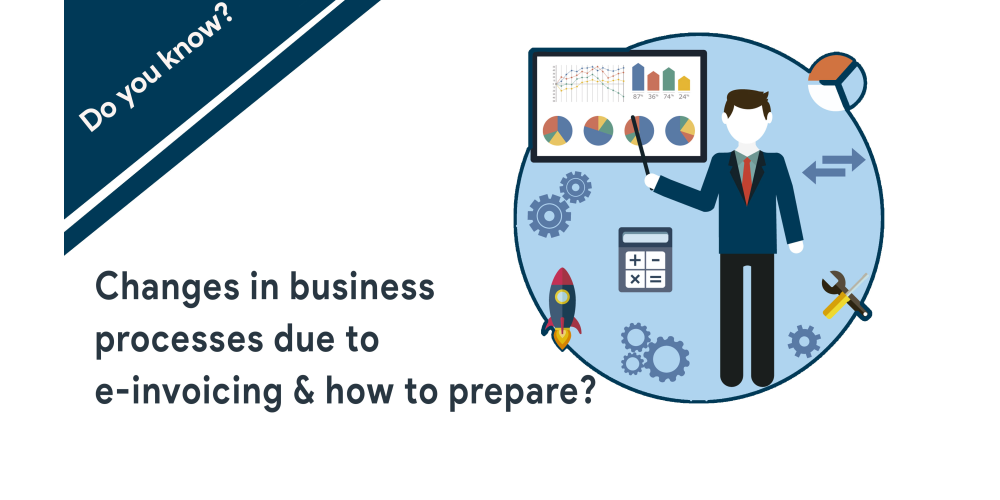
E-invoicing is transforming the way businesses handle invoicing, replacing traditional paper-based methods with digital solutions that streamline invoicing and improve accuracy. Here’s an overview of the changes e-invoicing brings to business processes and how companies can prepare for a successful transition.
1. Automation of Invoice Creation
- Change: E-invoicing automates the generation and sending of invoices, reducing manual input and the risk of errors.
- Preparation: Businesses need to implement e-invoicing software integrated with their ERP or accounting systems to enable automatic data capture and invoice generation. Training staff to operate the system effectively is essential.
2. Improved Accuracy and Reduced Errors
- Change: E-invoicing reduces human errors related to data entry, leading to more accurate invoices.
- Preparation: Ensure that your e-invoicing solution is compatible with existing business systems (e.g., ERP, CRM) to prevent errors during data transfer and guarantee accurate information flow.
3. Faster Invoice Processing
- Change: E-invoicing speeds up invoice approval and payment processes by eliminating delays related to physical document handling.
- Preparation: Businesses should update approval workflows to incorporate e-invoicing systems. Consider cloud-based platforms that allow for real-time collaboration and approval, enabling faster processing times.
4. Compliance with Regulations
- Change: Many countries are implementing laws requiring e-invoicing for tax and regulatory compliance.
- Preparation: Research and understand local legal requirements for e-invoicing in your jurisdiction. Work with legal advisors to ensure that your e-invoicing system meets compliance standards (e.g., data encryption, digital signatures).
5. Integration with Other Systems
- Change: E-invoicing often requires integration with accounting, ERP, and financial systems for seamless operation.
- Preparation: Prepare for integration by choosing e-invoicing solutions that are compatible with your existing business software. Work closely with IT teams to ensure smooth system synchronization and minimal disruptions.
6. Enhanced Security and Reduced Fraud Risk
- Change: Digital invoicing solutions offer more robust security features, reducing the risk of invoice fraud.
- Preparation: Choose an e-invoicing platform with strong encryption, secure transmission protocols, and identity verification mechanisms to protect sensitive financial data.
7. Better Cash Flow Management
- Change: E-invoicing facilitates quicker invoice approvals, leading to faster payments, which can significantly improve cash flow.
- Preparation: Businesses should train their teams to monitor real-time payment statuses and follow up on overdue invoices promptly to take advantage of quicker cash inflows.
8. Cost Reduction
- Change: E-invoicing eliminates the need for paper, printing, and postage, significantly reducing administrative costs.
- Preparation: Calculate potential cost savings to justify the investment in e-invoicing technology. Transition employees from manual invoice processes to focus on more strategic tasks.
Request A Call Back
We will try and understand your system architecture & discuss details of what it will take for you to get 100% compliant.














